Two Together

The Complete West Sikkim Travel Guide
Last updated on
West Sikkim, one of the four districts in Sikkim, is the mythical homeland of the Lepcha people. Escape to this faraway land of mountains and monasteries for a true taste of solitude. Our West Sikkim Travel Guide lists the best things to do in West Sikkim and will help you plan a complete West Sikkim itinerary.
WEST SIKKIM DISTRICT / INDIA
West Sikkim is beautiful.
In this land blessed by the Mother Creator of the Lepchas, Itbu-Moo, beauty is boundless. Rows of wooded mountains give way to the snowy peaks of the Kanchenjunga range. Sleepy towns and sleepier hamlets cling to the slope. On terraces cut into the steep mountainside, farmers cultivate cardamom and maize, buckwheat and wheat. Trees bearing cherries and mandarins adorn the winding roads and on the slopes. Orchids bloom with wild abandon in the mossy woods and in the spring, magnolias and rhododendrons paint the verdant mountains in shades of cream and pink. And at night, a gazillion stars and the Milky Way light up the sky. On a full moon night, you can see the Kanchenjunga clad in silvery moonlight; it’s an unforgettable vision, the divine spectre of a silver mountain floating in the ether.
In West Sikkim, there are roaring waterfalls and gurgling streams, and glaciers sparkling in icy valleys. You can hike in the pristine mountainside, far away from civilization and ringed by mighty Himalayan peaks; watching the sunrise over the fabled Kanchenjunga has made many a hardened adult weep. The Lepchas, the main community in West Sikkim, practice Animism and Tibetan Buddhism and as such, they worship the bounteous nature around them. Rivers and lakes, flowers and trees, birds and animals all hold religious significance to the Lepchas. Take a guide with you on your hikes and they can tell you about the significance of the world around you.
There are monasteries that date back hundreds of years and legends and folklore are intertwined into the daily lives of people. Yuksom, in West Sikkim, was where the kingdom of Sikkim was founded in 1642. You can still see the ancient Coronation Throne here. The second capital of Sikkim was also in this part of the state, at Rabdentse, where you can still see the ruins of the royal palace. People are warm and welcoming; stay at a homestay and your hosts will pamper you with local delicacies and regale you with stories over fruit wines and local brews.
Jump to…
Permits to visit west sikkim, travelling to west sikkim, travelling in west sikkim, stay at a local homestay, try adventure sports, trek in the scenic wilderness, eat the local food and taste the local brew, learn about organic farming and foraging, participate in local festivals, go sightseeing, rinchenpong, hee-bermiok, martam, & chayatal, when to visit west sikkim, what to eat in west sikkim, barsey rhododendron trek, rani dhunga trek, phoktey dara and singali-la top trek, goecha la and dzongri top trek, monastery trail trek, 14 days in west sikkim: roadtrip itinerary.
Indian nationals do not need permits unless they intend to do trekking. Permits from local authorities are required for the Dzongri, Goechala, and Singali-La treks; your trekking agent or homestay owners can organize them from Uttarey, Hillay, or Yuksom.
Foreign nationals require an inner line permit (ILP) to enter Sikkim. For details, see the Adventure Cell of Tourism & Civil Aviation Department, Govt. of Sikkim webpage.
West Sikkim is accessible via Siliguri in West Bengal. Buses and taxis regularly ferry travelers and locals to West Sikkim.
BY AIR // The nearest international airport is the Bagdogra Airport in West Bengal, which has flights from most cities in India and international flights from Bhutan. Most destinations in West Sikkim are at least a 5-hour drive from Bagdogra. You can reserve a car outside the airport. Shared taxis are usually not available from the airport unless you are travelling with a fellow tourist. Take a taxi to the Sikkim National Transportation (SNT) terminus in Siliguri; you can avail shared taxis from the SNT.
The nearest domestic airport is the Pakyong Airport in the East Sikkim district. Most destinations in West Sikkim are at least 4 hours away by road from Pakyong. However, note that flights to Pakyong are frequently cancelled or delayed due to visibility and weather conditions. Taxis to other parts of Sikkim are available from the airport.
BY RAIL // The nearest major railhead is New Jalpaiguri (NJP ) in West Bengal. New Jalpaiguri is well-connected to all parts of India. Most destinations in West Sikkim are at least a 5-hour drive from NJP. You can reserve a car outside the railway station. Shared taxis are sometimes available from NJP. Take a taxi or a shuttle to the Sikkim National Transportation (SNT) terminus in Siliguri; you can avail shared taxis to most destinations in Sikkim from the SNT.
From March 26, 2021, a new passenger train will connect NJP to Dhaka (via the Haldibari-Chilahati border) in Bangladesh.
BY ROAD // You can travel by road to Siliguri from other destinations in West Bengal and from neighbouring states like Assam and Bihar. Most vehicles to Sikkim leave from the Sikkim National Transport (SNT) Terminus in Siliguri. Reserve a taxi (INR 3000-6000 depending on the destination and size of vehicle) from SNT or travel on a shared taxi (INR 150-500 depending on the destination). Shared taxis are only available for major towns like Pelling, Rinchenpong, and Geyzing. There is a daily service to Yuksom and Uttarey.
Jorethang and Pelling are West Sikkim’s largest towns. The former is the gateway to the district and is well connected by taxis to the rest of the state, including Gangtok. Almost all vehicles to towns and villages in West Sikkim have to pass through Jorethang. Shared taxis for Jorethang and Pelling are available from Siliguri.
Shared jeeps and taxis are available for local transportation. For longer distances, enquire at your homestay or at the local taxi stand for timings and tickets. For shorter distances, you can flag an oncoming vehicle; most will have a board on the windshield with the name of the destination. Most trips within West Sikkim will cost you less than INR 150 on a shared jeep.
Also read : Planning to visit Gangtok on this trip? See our 2 Days in Gangtok: Mountains, Monasteries, and Sikkimese Food for a detailed itinerary.
Top Things to Do in West Sikkim
There are lots of things to do in West Sikkim as described in this West Sikkim travel guide.
Homestays are one of the main attractions of Sikkim. Almost all towns and villages in Sikkim have homestays where you can stay with locals and learn about their culture and traditions. We stayed at homestays throughout our trip and got the opportunity to chat with the family and learn about their day-to-day life, their hardships, and the joy of living in such scenic surroundings.
The mountains of Sikkim are known for their adventure sports activities. From river rafting to paragliding, there are a number of adventure sports that you can take your pick from.
Trekking is one of the best things to do in Sikkim. High-altitude trekking draws enthusiasts to Sikkim from around the world. Seasoned trekkers trek to the Goecha-La Pass and Singali-La Top. For beginners, there is the Rhododendron Trail that takes you into a fairytale landscape painted pink with rhododendrons in the spring. There’s no death of day-treks either. Trek to the Mainbas Falls from Yuksom, or to Rani Dhunga from Pelling/Darap, or from Rinchenpong to Pelling…there are countless trekking trails in these mountains.
For the best of local Sikkimese food, stay at a homestay. Many households are entirely vegetarian, so you can taste a wealth of produce and local greens. In the evening, take a swig of chhang and enjoy the starry skies.
Fresh organic produce is one of the fabulous things about Sikkim. Almost every homestay will have a plot of land where the owners grow vegetables like peas and potatoes, carrots, and radishes. Come mealtime, they will harvest the produce and bring it straight to the kitchen! Could it be fresher? In the countryside, people often forage for herbs that are added to food or used for their medicinal properties.
The religious map of West Sikkim is a patchwork of Hinduism, Buddhism, and indigenous religions like Yumaism. In the mountains, people worship bounteous nature, sparkling waterbodies, and ancient trees. Depending on when you are visiting, you can witness memorable dances at the monasteries and other festivals in West Sikkim.
There are lots of things to see in Sikkim and local tours operators organize sightseeing tours at reasonable rates. From the skywalk in Pelling to the countless monasteries that dot the countryside, there is no dearth of sightseeing options here.
Where to Go in West Sikkim
Sikkim is dotted with scenic hamlets and majestic views of the eastern Himalayas and West Sikkim is no exception. Our West Sikkim travel guide gives you a glimpse into the many places that you can visit in West Sikkim; some of these are well-worn tourist destinations, and others are truly off the beaten path. In this list, you can also find a list of West Sikkim homestays along with the best places to visit in West Sikkim.
At the heart of West Sikkim’s orchid belt is Rinchenpong. There are several things to do in Rinchenpong . Commanding breathtaking views of the Kanchenjunga range, Rinchenpong, and its twin, Kaluk, are loved as much for their location as they are for their orchards and birds. Both the villages are slowly gaining popularity on the tourist circuit because of their location on the ridge but they are far from splitting at the seams with tourists; you can enjoy quiet walks and solitary rambles in the woods and roads of Rinchenpong and Kaluk.
Where to stay in Rinchenpong
A kilometre downhill from the Rinchenpong market is the little village of Yangsum where Dawa Sherpa runs his magical homestay, Mayal Paradise . From the lawn, which is hemmed with kiwi and orange trees and poinsettias, orchids, roses, and a medley of other plants, you can see the Kanchenjunga. The tariff is INR 1000 per night, per person and includes three meals. Rooms are basic but the hospitality, including the food, is memorable. For a luxurious experience, there is the Yangsum Heritage Farm next door. Located on acres of private forest, the estate has traditional Sikkimese-style huts. The tariff starts at INR 5000 per night.
A small village on the lip of the Barsey Rhododendron Sanctuary, Okhrey is primarily a trekking town that erupts in a blaze of red and white rhododendrons in spring. The Barsey Rhododendron Trek, both the day trek and the longer, multi-day trek that takes you all the way through Uttarey, start at Hillay, a short drive from Okhrey as described in our Okhrey travel guide . Away from the hustle and bustle of cities, Okhrey promises clear views of the surrounding mountainside, skies glittering with stars, and oodles of rhododendron wine.
Where to stay in Okhrey
Sherpa Lodge is a no-frills place charging INR 1000 per person per night and includes three meals. The similarly priced Royal Barsey homestay, with its pretty garden and lovely views, is another good homestay in Okhrey.
Located within a 10 km radius, the three villages of Hee-Bermiok, Chayataal, and Martam are merely clutches of houses in black cardamom county. These villages are populated by the Subba community. On terraces cut into the slopes, farmers grow black cardamom, corn, ginger, and vegetables. Major attractions here are a Shiva Temple, a holy cave called Sirijunga Phuku, Chaya Taal and a statue of Mahatma Sirijunga Teyongshi.
W here to stay in Hee-Bermiok
Located on a hilltop in Hee-Bermiok is the Dhungay Estate , a family farm where two generations of the Chhetri family live. Expect clean rooms, local food, and friendly hospitality. Other options are the Martam homestay run by two brothers, Yogesh and Yowan, and the Chaya taal heritage homestay .
Another trekking town, Uttarey is located in Sikkim’s far west and is the starting point for the Phoktey Dara trek and the Singali-La trek. If you are not into longer treks, follow our Uttarey travel guide and opt for day hikes to Mainebas Falls or the Limboo villages of Bandukey and Ferek.
Where to stay in Uttarey
Your best options in Uttarey are Sherpa homestay , where we stayed, and Monal homestay . Sherpa ji organises local treks and is a treasure trove of information about the surroundings and can help you with logistics for any place in West Sikkim.
Known for the Alpine Cheese Factory, an Indo-Swiss collaboration specialising in Gouda cheese and the popular Alpine cheese spread, Dentam is a scenic village set amidst forests of rhododendron and mixed vegetation. The village offers lovely views of the Kanchenjunga and is an ideal spot for birding enthusiasts.
Where to stay in Dentam
The Lali guras homestay is recommended by travellers.
Idyllic Darap is perhaps one of Sikkim’s prettiest villages. Not more than a cluster of painted houses huddling on terraced slopes where corn, potatoes, cardamom, and mustard grow, Darap was planted on the travel map by Shiva Gurung’s Daragaon homestay. Though only a few kilometres from bustling Pelling, Darap is sleepy. There are not many things to do in Darap except go on rambling walks, relish the organic food, and share stories over tongba by a bonfire in the evening.
Where to stay in Darap
We have stayed twice at Shiva Gurung’s Daragaon Village Retreat and we can’t recommend it enough. Radha, our hostess, cooks the most amazing Sikkimese food; expect fries and curries cooked with produce from the garden, an exciting range of chutneys made with locally forages herbs, buckwheat and millet pancakes, and more. The Sukhim Limboo homestay next door is another good place to lodge while in Darap.
No West Sikkim travel guide is complete without Pelling. Pelling, with its grand views of Kanchenjunga, buzzes with tourists year round. Like most other places in West Sikkim, it is known for its monasteries, Pemayangtse and Sanga Choeling being the most popular ones. The Rabdentse ruins, the ruins of Sikkim’s second capital, is nearby. The Pelling skywalk with its 137 ft tall statue of Chenrezig (Avalokitesvara) is another of Pelling’s major attractions.
Where to stay in Pelling
Hotels and lodges have sprung up like mushrooms in monsoon in upper and lower Pelling and you will be spoilt for choice. Look for a place that offers views of the Kanchenjunga. For a luxurious experience, book a stay at the Elgin Mount Pandim.
Sikkim’s first capital, Yuksom, is hidden away in the mountains of West Sikkim. Today, it is known as a trekking town where trekking enthusiasts congregate before beginning on their ascent of the Dzongri top and Goecha-La. Read our Yuksom travel guide for things to do in Yuksom and to see photographs of Yuksom.
Where to stay in Yuksom
Limboo homestay and Norgay’s homestay have good reviews from travellers. The Khecheopalri Sanctuary homestay near the holy Khecheopalri Lake is also well recommended by travellers.
Located on a hilltop overlooking the Rathong and Rangeet rivers, Tashiding is known for the holy Tashiding Monastery. According to legends, when guru Padmasambhava wanted to find a place to meditate in solitude, he shot an arrow into the sky and it landed on a site known today as the Tashiding Monastery. The 17th-century monastery belongs to the Nyingmapa order.
Where to stay in Tashiding
Sanu’s homestay is your best bet here.
West Sikkim is lovely year-round! You can plan your trip around your interests or festivals. In this West Sikkim travel guide, you can find out the best times to visit West Sikkim.
Autumn / Winter
Perhaps the best season to visit if you are keen on clear views of the Kanchenjunga is the winter. The skies are the sunniest in the autumn and winter, from October to early-March. This is also the season for fruits and you gorge on cherries and kiwis and oranges. The upper reaches can be bone-chillingly cold, so pack enough warm clothing especially if you are visiting between December and February.
- Losar : Losar, the Tibetan New Year, is celebrated in February.
- Bumchu : The Bumchu festival held at the Tashiding Monastery is January draws scores of devotees from across the state and beyond.
- Namsoong : The seven days long Namsoong is celebrated by the Lepchas in December/January.
- Maghey Sankranti : This festival is celebrated by Hindus around the country in January. Fairs are organized along the river banks and confluence of the rivers.
- Dasain : Nepali Hindus celebrate Dasain during Dusherra.
Spring / Summer
This is the season of magnolias and rhododendrons. The woods are a riot of bright red and pink from late-March to the end of May. Though sometimes a little drizzly, this is the best season for trekking in the Barsey Rhododendron Sanctuary. Spring is also the season for wild ferns and foraging, so expect to taste exotic ingredients like ningro and sisnu at your homestay. Around late April, days become hotter. Bright and sunny, summers in Sikkim are your escape from the sweltering heat of the plains. Come to laze in the honeyed heat amongst the wildflowers. The festival of Saga Dawa is celebrated at the end of May or early June.
- Sakewa : Celebrated by the Kirat Khambu Rai community, this nine-day festival culminates with sowing seeds in the fields.
- Kagyed Dance : This is celebrated in the month of December. The dance symbolises the victory of good over evil.
The misty mountains and the constant deluge adds a new dimension to the thickly wooded mountains. This is the low season and you can score a deal at many of the homestays. However, be warned that landslides are common in this part of the state. Often, entire roads are washed away and repairs can take a while. Most taxis will operate only within a set radius during the monsoon. At the end of the monsoon, around mid-September, nakima flowers grow. The greenish-purple flowers, often cooked with meat or with other vegetables, nakima is a local delicacy.
- Phang Lhabsol : Celebrated at the end of August, Phang Lhabsol marks the treaty of blood brotherhood that was signed between the Lepchas and Bhutias by Khye Bumsa and Tetong Tek. Mount Kanchenjunga is worshipped during the festival. Monks perform the Pang-Toed dance and spectacular Warrior Dance.
Agriculture is organic here. And chances are, if you are eating at your homestay, the produce is either from your host’s farm or vegetable patch or from their neighbour’s. Things are incredibly fresh here! Vegetarianism is increasingly becoming popular in Sikkim; in Darap, our host mentioned that most members of the Limboo community have embraced vegetarianism. Here’s a list of the things we ate and drank or heard about in West Sikkim. Preparations vary from community to community; there isn’t enough literature on the gastronomy of this region. Most of our knowledge of Sikkimese food is limited to momos and thukpa , perhaps the occasional tingmo or phaley but Sikkimese cuisine is a vast treasure trove of local ingredients and techniques passed from generation to generation. Rice is the local staple and locals eat rice for breakfast and dinner. It is accompanied by dal, usually the indigenous paheli dal that is cooked with ginger and turmeric, sauteed leafy greens (in winter, when we were visiting, we ate a lot of rai saag ), curried vegetables ( iskus is very popular), and meat. Sikkimese style aloo dum is tempered with nigella seeds. Topped with Wai Wai, a local pre-packages noodle, and lots of chilli pepper, it makes for a popular snack. Potatoes, peas, cabbages, tomatoes, spring onions, carrots, and radishes are common vegetables in the mountains of West Sikkim. Most locals favour the tongue-searing dalle khursani chillies to add heat to their food. Spices, except ginger and turmeric, are sparsely used; though Sikkim is the largest producer of black cardamom, it is hardly used in daily cooking. It is only used in certain meat curries and in making sel roti , a leavened ring-shaped bread made during festivals. Foraging is common in Sikkim. Come spring, locals forage for ningro , a type of fiddle-head fern, and sisnu , the stinging nettle. The nakima , a flower of the lily family, blooms in September; it is cooked with meat or with other vegetables. Wild herbs like chimping are used to flavour food. Sikkimese forage for berries which they make into preserves and pickles. Pickling and fermentation are common methods to preserve food, especially in winter when not many vegetables grow. Radish and radish leaves are dried and fermented, then used to make sinki soup. Fermented spinach soup, or grundruk ko jhol , is relished all around Sikkim. String beans and certain types of orchids are pickled too. Pickles made from philligey and silam seeds, and pickled lopsi are common condiments. Chhurpi , a local cheese, is widely used in Sikkimese cuisine. The choice of meat depends on religious restrictions but most communities here eat pork. On the trek to Mainebas Falls in Uttarey, our 19-year-old guide told us about a pork sausage called “kurdjeong” that is made on special occasions. Blood sausages, called ghyuma , are considered a delicacy in this region. Grilled meat, or choila , is widely enjoyed. A powder made from the burnt feathers of a chicken is used in a Rai community dish called wachipa . Tongba , a drink made from fermented millets is a common beverage in West Sikkim. Other libations include teen paani and fruit wines like guava wine and peach wine. The pale pink rhododendron wine is much loved by visitors.
Also read : Gangtok, the state capital, has some amazing restaurants! Check out our 10 Best Places to Eat in Gangtok .
West Sikkim Travel Guide: Trekking in West Sikkim
A good West Sikkim travel guide will give you a glimpse of the region’s many mountain trails that await your footsteps. The mountains of West Sikkim draw trekkers from around the world. Unlike the trekking trails of Himachal Pradesh and Uttaranchal, the trails of West Sikkim, most of which start at Uttarey, Hilley, and Yuksom, do not see many trekkers. A lot of the region remains unexplored and most trekkers come for a glimpse of the majestic Kanchenjunga range.
Perhaps the most well-known of all trails in the region, this trail erupts in a medley of pink and white rhododendrons in spring. Besides rhododendrons, the sanctuary is also home to creamy white magnolias and a variety of wildflowers. You can spot numerous Himalayan birds here. You can choose between a day trek, from Hillay to Barsay and back, or do a multi-day trek from Hillay to Uttarey.
A day trek from Pelling or Darap, this steep trail takes you up the mossy jungles to the top of a massive outcrop called Rani Dhunga. According to legend, Sita (the wife of Rama from the great Indian epic, Ramayana) once stepped on the rock. It is said that her footprints can be still seen here. The mixed jungles, only 6 km from Pelling, are home to wild animals like musk deer, Himalayan tahr, wild boar, Himalayan black bear, and Himalayan blue sheep.
The USP of this trail is the unprecedented views of the Kanchenjunga range and also of Everest from Phoktey Dara and Singali-La top. Starting at Uttarey, the trail, partly marked, runs through dense jungles and parts of the Barsey Rhododendron Sanctuary.
Probably the crown jewel of trekking trails in the region, the Goecha La trek is a high-altitude trek that offers stunning views of Mt. Pandim, Kanchenjunga, Rathong glacier, and Samiti Lake. Read Tanmay Bain’s account of completing the Goecha La trek to find out more about this trail.
The monastery trail covers four of Sikkim’s oldest and most revered monasteries, namely Dubdi, Sinon, Hongri, and Tashiding. Start at Yuksom at daybreak and reach the Tashiding monastery, 19 km away, in the evening, or plan it over multiple days with stops at local homestays.
Also read : Fancy adding a detour to Darjeeling on the way back? See our 3 Days in Darjeeling: Nature Walks & Nostalgia for an itinerary.
What can beat a roadtrip through the gorgeous landscape of Sikkim? Our 14-day West Sikkim roadtrip itinerary includes the best places to visit in West Sikkim. This route is open year-round; come in spring to see the vibrant blooms, in autumn for the fruits, or in winter for clear views.
Like it? Pin it!
Share this:
- Click to share on Facebook (Opens in new window)
- Click to share on Twitter (Opens in new window)
- Click to share on Pinterest (Opens in new window)
- Click to share on WhatsApp (Opens in new window)
- Click to email a link to a friend (Opens in new window)
- Click to print (Opens in new window)
Mohana & Aninda
Mohana and Aninda are travellers and advocates for car-free travel. Two-together is their travel blog where they document their travels to encourage and inspire readers to seek solace in new places, savour local cuisines, and relish both unique and everyday experiences. When they are not travelling, they are actively researching trip ideas and itineraries, obsessing over public transport timetables, reviewing travel budgets, and developing content for their blog. They are currently based in Edinburgh and exploring Scotland and beyond by public transport.
FEATURED POSTS
Moving to Scotland, UK: A Complete Guide
Edible souvenirs to bring home from india, best things to eat in malaysia: malaysia food guide, search posts here.
Latest Stories
7 Days in Serbia Itinerary: The Best of Northern Serbia
3 days in belgrade for food and culture lovers, things to do in subotica, best indian restaurants in edinburgh, best places to see cherry blossoms in edinburgh, three reservoirs walk: pentland hills, 20 responses to “the complete west sikkim travel guide”.
Such comprehensive and well written guides. I travelled to West Sikkim some years back in winter. I’m tempted to go again in spring to see the orchids and other flowers, and stay at some lovely Homestays. Good that you include “how to be a good guest”. Too many travellers are rowdy and throw litter!!
Such a good, detailed guide. Also these photos are amazing. So gorgeous!
Hi, I would love to visit the west sikkim next year and I will that this pandemic will be over. Thank you for sharing the amazing information with us.
Wow, thank you for sharing such a detailed guide. This place looks magical, between the food, treks, and mountains. I love cultural experiences like this, so thanks for putting this special place on my radar!
That is a lovely post. Sikkim is one place I have been wanting to visit for the last one year. But, thanks to Covid, I have not been able to.
Fingers crossed, this year will be healthier and better. Sikkim is very beautiful, really.
REALLY love this guide – the table of content, itinerary, and layout are incredibly helpful! I would love to visit in August to go to the Phang Lhabsol Festival! Sounds amazing!
You are quite the poet. I love your lead. I felt completely transported to this region. Nice article.
Thank you! It is an incredibly beautiful part of the world.
I have only visited a very small portion of the country so West Sikkim is new to me but there seems to be so much to do there and I love the idea of a homestay! This is such a well-detailed article, thank you for sharing
I’d love to explore the local food of West Sikkim!
Hi – Thanks so much for your wonderful blog post and photos. After reading up , i thought of going to the following places – Phamrong falls Kanchenjunga falls Rimbi orange garden Pemayangtse monastery Rani Dhunga Jungle trek Varsey Rhododendron sanctuary, Singshore bridge, Mainebas Falls Khecheopalri lake Rabdentse ruins
We are a family of 4 with 2 kids (11-14) that loves to do hikes, waterfalls and everything nature, but my family is a little picky on the stay , so was thinking of using Pelling as the base. Would that work ? I am especially worried about Rhododendron sanctuary hike (was thinking of a day hike) . Also wanted your advice if i only have 4 full days which ones you would suggest.
You could definitely stay at Pelling and go on hikes in the surrounding areas. The only disadvantage is that it will add a bit of journey time. We avoided staying at Pelling because we wanted to stay at homestays and Pelling can get really crowded during the high season. Since you mentioned that your family enjoys hiking, I would suggest the following for 4 days:
– A day hike in the Barsey Rhododendron Sanctuary from Okhrey – A day exploring Pelling and its surroundings, like visiting the Rabdentse Ruins, the Singshore Bridge, the Pelling Skywalk, and the monasteries (or, you could drive to Uttarey via the Singshore Bridge and trek to Mainebas Falls and return to Pelling) – A day to visit Yuksom. You can hike to Dubdi Monastery there. On the way, visit the Khecheopalri Lake and the Rimbi Orange Gardens – A day sightseeing in Rinchenpong or going on the Rani Dhunga Trek (or, if you choose to go to Uttarey, you can go sightseeing around Pelling)
Happy Trip!
Awesome, thanks so much ! Keep up the good work!
Looks like West Sikkim has a lot to offer! I would especially love to visit Rinchenpong Monastery, it looks absolutely stunning. Great post! 🙂
This does look like a beautiful area to visit for a few days. I’d really like to learn about the organic farming here.
It is staggering how much info you packed into this post. Great job!
This travel guide is a goldmine for anyone planning a trip to West Sikkim! The detailed insights on attractions like Pelling and Yuksom, coupled with practical tips on transportation and accommodation, make it so much easier to envision the perfect itinerary. I’m particularly intrigued by the lesser-known spots like Tashiding Monastery; it sounds like a hidden gem waiting to be explored. Thank you for putting together such a comprehensive guide! Just curious, do you have any recommendations for off-the-beaten-path hiking trails in the region?
Hi Anshima! Thanks for your kind words. We haven’t done any of the hikes and there are quite a few in the region, esp. around Yuksom. Mr. Shiva Gurung at the Daragaon Homestay is a great resource for hiking in West Sikkim.
Sikkim Things to do in Sikkim
Leave a Reply Cancel reply
This site uses Akismet to reduce spam. Learn how your comment data is processed .

WEST SIKKIM TRAVEL GUIDE
Calm, serene, a paradise for adventure lovers.
The grand white pinnacle of Mount Kanchenjunga above West Sikkim’s stunning scene of imposing mountain edges hung to the shoulders in rich green woodland. A bunch of charming religious monasteries and temples, towns and cascades add to the general interest. With a little arrangement and appropriate grants, there is some marvellous trekking, including the week-long experience to Goecha La, which approaches near the frigid base of Kanchenjunga. West Sikkim is essentially for those that love nature and wish to meditate amidst the soothing calm greenery.
PELLING AND GEYZING
Without a doubt the most well-known fascination of West Sikkim, Pelling remains 2150 meters above sea level. Both the Himalayan and also Kanchenjunga range can be seen from here. This is the base from where adventure lovers and trekkers go on treks to remote areas. Pelling has a lovely helipad with astounding views that is a noteworthy fascination. Different attractions incorporate the Sanga Choeling monastery, Pemayangtse monastery, cascade at Rimbi River and the stone garden.
10 km before one touches base at Pelling, there is a significantly bigger town known as Geyzing (or Gyalshing). This is West Sikkim’s capital and is known for the clamouring Geyzing market that has been working for over a century. Unexpectedly Gyalshing implies the Kings garden and it alludes to the Royal greenery enclosures at Rabdentse Palace. On the off chance that you need to shop then the Geyzing bazaar is the best alternative. You will discover places that offer lip-smacking dishes and you can shop for local fine artefacts here.
BEST TIME TO VISIT
Summers and pre-winter season are the best here in between March to May and September to October
BARSEY, OKHREY VILLAGE AND RHODENDERON SANCTUARY
Lying at a height of 10,000 feet… Barsey (or Varsey) is one of the lesser known destinations of West Sikkim close to the Nepal Border. With its high height, Barsey displays marvellous perspectives of the Kanchenjunga peaks. The entire region is covered with rich timberlands that are home to a great deal of vegetation like wild hemlock, magnolia and orchids.
The Barsey Rhodenderon Sanctuary that is settled between the Kanchenjunga national reserve in North Sikkim and the Singalila National Park in south Sikkim is 104 sq. km extensive and is considered as a standout amongst other attractions of West Sikkim. One needs to visit this place amid March-April to welcome the uproar of blooms here. Red Panda is additionally found in this asylum.
A little town that has been making an extensive name for itself in the field of eco-tourism is Okhrey that is arranged close to Barsey Rhodenderon asylum. You have to travel for 18 km by means of Sombaria to reach here. Sherpa clans live here and they alongside the Sikkim government have advanced a social mindfulness venture that works through little homestays in the town. One can go to Okhrey to relish the authentic cuisine here, admire the architecture, dresses and music and dance programs. Nature strolls, mountain treks, cooking classes, melodic nights and inborn association programs are additionally offered in Okhrey.
Summers and spring are the best seasons here that is during the month of March to May and September-October.
DENTAM VALLEY
Dentam Valley is around 12 km far from the picturesque spot of Barsey. Dentam is at a normal height of 1500 meters. Shockingly even at this rise Dentam has smooth non-undulating land that has uncommon geology and offers breath-taking views of Kanchenjunga. A cover of rhododendrons encompass Dentam and nature lovers, bird watchers gather here. Loads of exercises like mountain climbing and trekking occur here.
A little separation far from Pelling lies the beautiful villa of Biksthang that was otherwise called Chuchen … this implies Big Lake. The Lepchas who have been occupying this place for a long time say that Biksthang has a wide assortment of sacrosanct stones. The region is acclaimed for bird watching, nature watching and is one of the most extravagant makers of millet. Mongalbaria which is the site of the nearby haat is a major fascination here. Each Sunday as a mind blowing assortment of privately made sustenance, flavours and harvests are sold here.
Once in Biksthang don’t miss a visit to Lheuntse religious community, Rahu Ney Caves and the god of the Kanchenjunga watchman divine force of Sikkim who protects the 5 treasures that are symbolized by ranges of Kanchenjunga, Narsing, Gabur Gangsten, Pandim and Simvo.
Summers and harvest seasons are the peak seasons here that fall in between March to May and September-October.
Enroute to Pelling there is a beautiful of Sikkim that really goes about as the entryway to West Sikkim. This place is an intersection of streets that roll in from Kewzing, Tashiding, Gangtok, Peling, Yuksam, Jorethang, and Gayzing (Gyalshing).
Legship has steadily turned into a water sports heaven. The well-known sanctuary of God Shiva is arranged here other than the beautiful Rangit River. You can appreciate paddling, drifting, kayaking and so on in the waters of the Rangit. One noteworthy fascination of Legship is its recently created water stop which has just started attracting a considerable measure of sightseers. Near the Legship showcase is Tatto Pani that is a heated water spring with charged helpful restorative properties.
The best of this town can be enjoyed during the summers and harvest season which falls during the month of March to May and September-October.
Vacationers typically approach Uttarey from Dentum, Gezing and Peling. This little village is celebrated for its normal excellence and peaceful environment. Uttarey is flanked on all sides by Bhutan, Nepal, West Bengal and Tibet and lies on the north incline of the Singalila range. This is a little satellite township that is loaded up with little and intriguing treks separated from a bounty of Rhodenderons.
There is a trout angling ranch close Uttarey at Chitrey that pulls in a great deal of fishermen and fishes. It is around 1km far from Uttarey and is called Uttarey Trout Centre. You can see the way toward raising, sustaining and reproducing trout angle here and additionally buy new fish and fish items from the inside.
This is an all-time destination but April is the best season for seeing rhododendrons while winters are best for trout angling and treks.
DZONGRI AND YUKSOM VILLAGE
Dzongri remains at a height of 4200 meter and is currently viewed as extraordinary compared to other trekking places of Sikkim… some even go as far to state that it’s the best trekking destination of India. There are strings of smooth White Mountains all around Dzongri and the sight is sufficient to keep one entranced. It is said that one can see 14 isolate crests from Dzongri. Snowfall is plenteous here amid the winters and the temperature plunges beneath zero. Dzongri is suggested for enthusiastic and experienced trekkers. You should be fit before you can endeavour to trek in these parts.
Yuksom is a sluggish town loaded up with rich greenery and flanked by tasty backwoods. Yuksom is the place where you will discover generally decent lodgings, eateries, travel organizations, shops and so forth to plan and revive yourself for the Dzongri trek. This is the site of the Kanchenjunga National Park. There are wonderful treks and visits accessible inside the recreation centre and cabin must be pre-orchestrated in the offices given by the Range Office.
March-April is the best season for Dzongri trek while September to October are best for trekkers who enjoy cold weather.
RINCHENPONG AND KALUK
Rinchenpong has bounteous normal excellence and the views of Mount Kanchenjunga are amazing from here. One can likewise see the great Mount Narsing from here. There is an edge that associates Kaluk to Rinchenpong and this has extraordinary review potential. The mountain edge reaches out to Bermiok, Dentam, Hee and Uttarey. Numerous voyagers are attached to arranging entire day excursions to the Ridge to explore its whole arrangement of attractions.
RINCHENPONG
Richenpong has numerous stunning attractions like the eighteenth century Rishum monastery and another religious temples which are situated amidst the dazzling woods trail. There is a recreation centre committed to Rabindranath Tagore here. The Poison Lake, remains of old British Bungalow and so on are other special attractions of Rinchenpong.
KALUK Kaluk town is only a couple of km far from Rinchenpong and they are typically visited by travellers at one shot when they visit this district. The Gurung Monastery, Lepcha Heritage House and the shocking mountain views from relatively every bearing are the essential fascination of this region. You can go boating at Teesta River and shop at the Chinese bazaar that every so often accumulates on its banks. The Kaluk bazaar sits just on Thursday evenings and the villagers offer everything from vegetables to garments to electronic products from the two sides of the streets. BEST TIME TO VISIT
Summers and harvest time and even winters are incredible for visiting Kaluk. But during the rainy season, it is better to avoid this destination.
HEE BERMIOK
Hee Bermiok alludes to two or three of towns in West Sikkim that has picked up a great deal of conspicuousness over the most recent few years. This group is near the Kaluk Rinchenpong zone. These towns are flanked by the Hee River toward the west, Rangit River toward the east, Kalez River toward the north and Samdong timberland reserve in the south. Colourful assortment of widely varied vegetation are the sign of Hee Bermiok.
Some stunning attractions of Hee Bermiok are Srijunga cascades that is around an hour’s far from the bazaar of Bermiok. The flawless Chaya Taal Lake is close to the Hee town. There is a water stop here with swimming pools and slides. Travellers who come to Hee Bermiok often take part in mountain biking, nature strolls, ancestral monument visits and treks.
Summers in the long stretch of May is the point at which the Tourist Festival occurs, this is the best time to be here.
Still wondering? Hush all the thoughts away and visit the lovely destinations of West Sikkim on your next vacation. The untouched valleys have stories to tell.
Get Instant Call Back
Our experts will get in touch with you shortly.
View Sikkim Packages
Why Choose us ?
What makes us diffrent from other tour package companies

Best Travel Experts
Our travel experts have core and intense knowledge about Sikkim sector with over 10 years of experience that will help you choose the best possible itinerary as per your requirements.

24 X 7 On-Trip Assistance
Our travel experts are just one call away during your tour to help you with any kind of immediate assistance so that your tour is a more enjoyable and hassle-free tour.

Best Rate Guarantee
eSikkim Tourism ensures best rates to all our esteemed guests since we have our own hotels and fleet of vehicles and drivers and there is no third-party involvement. This ensures personalized service and best rates.
Sikkim Best Sellers View All Packages
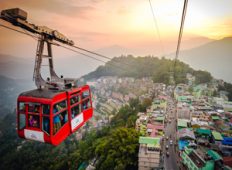
03 Nights / 04Days
Gangtok tour, rs. 6200 rs. 7500.
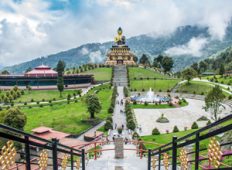
07 Nights / 08Days
Gangtok pelling darjeeling tour, rs. 14500 rs. 17500.
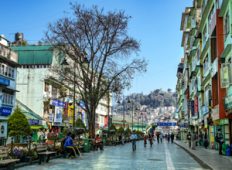
04 Nights / 05Days
Gangtok darjeeling tour package, rs. 9200 rs. 11000.
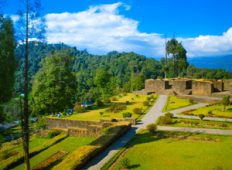
Gangtok Lachung Pelling Tour
Rs. 15000 rs. 18000.
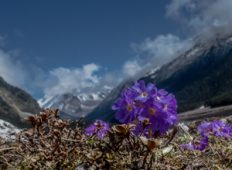
Gangtok Lachung Tour
Rs. 8800 rs. 10500.
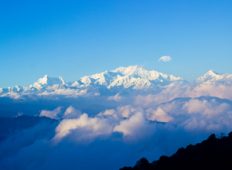
08 Nights / 09Days
Gangtok lachung pelling darjeeling tour, rs. 17000 rs. 20500.
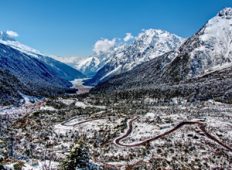
05 Nights / 06Days
Delightful gangtok and darjeeling, rs. 10500 rs. 12500.
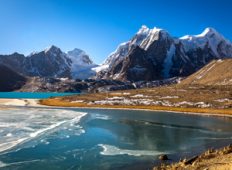
The Sparkling Gems of Sikkim
Rs. 11400 rs. 13500.
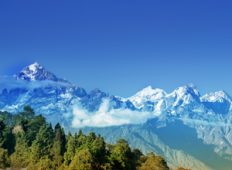
Gangtok Pelling Tour
Rs. 10300 rs. 12500.
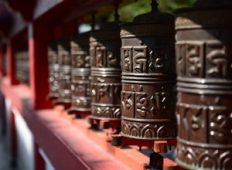
Gangtok Lachen Lachung Tour
Rs. 12000 rs. 14500.
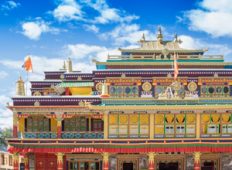
Gangtok Kalimpong Darjeeling Tour
Rs. 10800 rs. 12900.
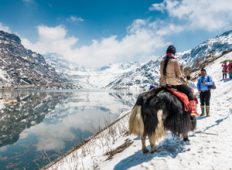
06 Nights / 07Days
Extended gangtok pelling darjeeling tour, rs. 13000 rs. 15500.
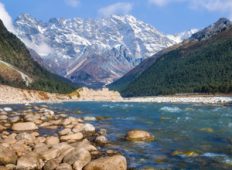
Blissfull Sikkim Darjeeling Pelling Tour
Rs. 11700 rs. 14000.
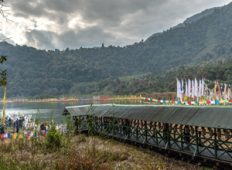
Gangtok Lachen Lachung Pelling Tour
Rs. 15900 rs. 19000.
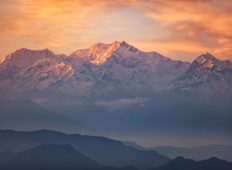
Gangtok North Sikkim Tour
Rs. 13700 rs. 16500, popular places to visit in sikkim view all.
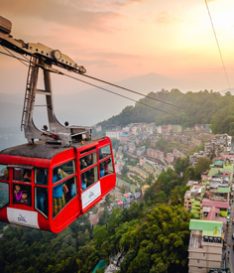
Popular Attractions To Visit in Sikkim View All
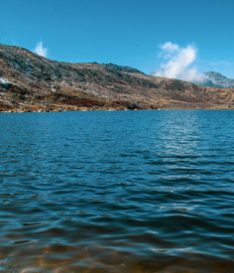
TSOMGO LAKE
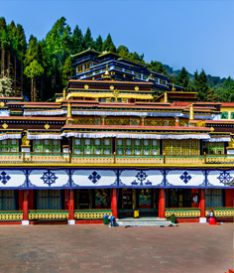
- RABDENTSE RUINS
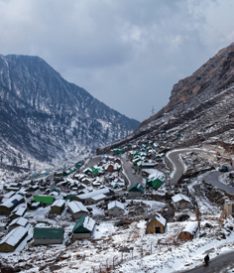
- Nathu La Pass
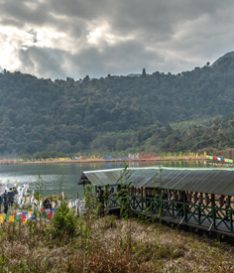
- Khecheopalri Lake
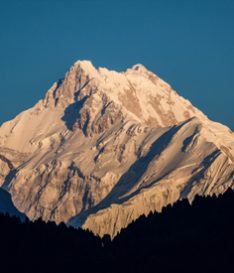
- Khangchendzonga National Park
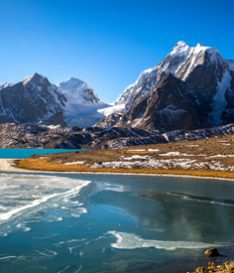
- GURUDONGMAR LAKE
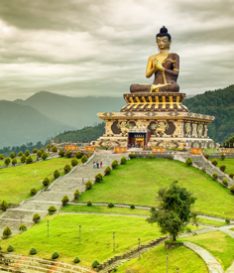
- BUDDHA PARK RAVANGLA
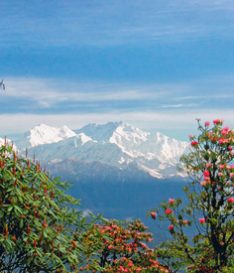
- BARSEY RHODODENDRON SANCTUARY
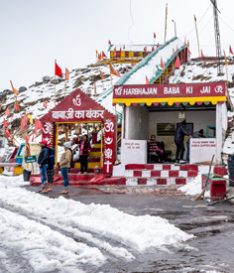
- Baba Harbhajan Singh Temple
Top Things to do & see on your Holiday to Sikkim -->
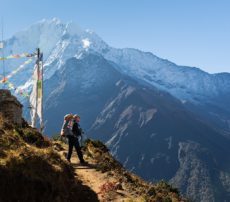
Monasteries In Sikkim
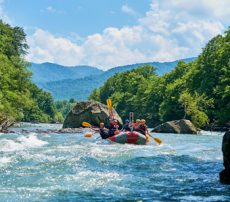
Adventure Tourism Sikkim
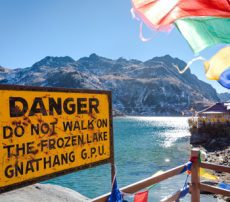
Lakes In Sikkim
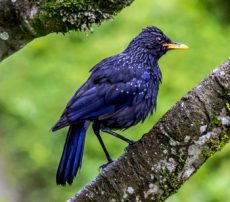
Wildlife In Sikkim
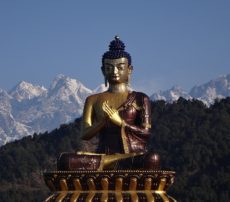
Buddhist Circuit
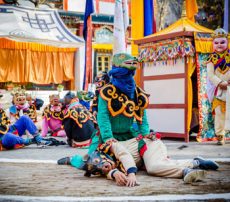
Fair and Festivals
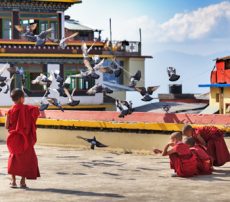
People and Culture
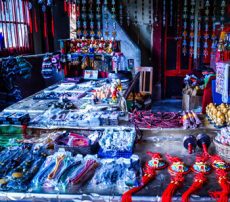
Shopping In Sikkim
From our blog view all blogs.
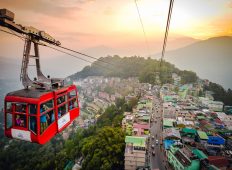
Places To Visit In Sikkim
Published on May 28,2019
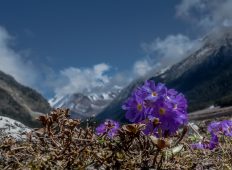
Places to visit in Gangtok
Published on Apr 19,2019
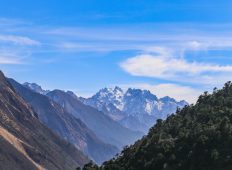
Places to visit in Lachen
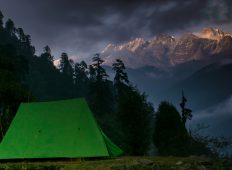
Places to Visit in Lachung
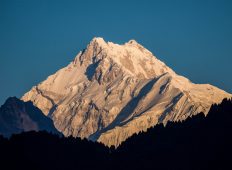
Places to visit in Pelling
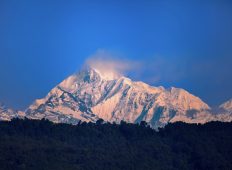
Places To Visit In Sikkim During Summer
Published on Apr 27,2019
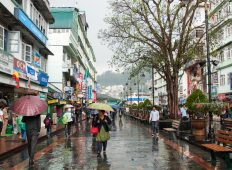
Places To Visit In Sikkim During Monsoon
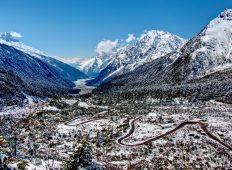
Places To Visit In Sikkim During Winter
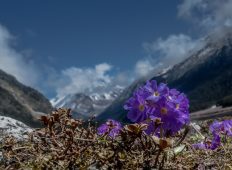
Things to Do in Sikkim During Summer
Published on Apr 22,2019
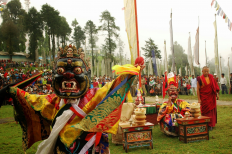
Things To Do In Monsoon: 7 Magical Experiences...
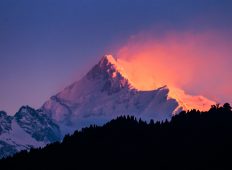
Things To Do In Winter: Experiences That Account...
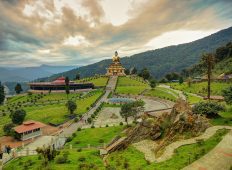
Things To Do In Sikkim
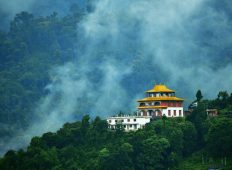
Things to do in Gangtok
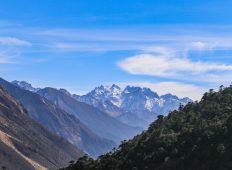
Things to do in Lachen
Things to do at lachung, sikkim travel information at a glance.
Find the authentic information on how to plan a hassle free tour to Sikkim. Travalghar puts together for you relevant details on how to reach Sikkim along with information on different means of transportation and the best time to visit. Also explore the different attractions and destinations in Sikkim with the help of our map, made easy for you to navigate.
- About sikkim
- Sikkim Darjeeling Tour Packages
- Visiting Sikkim in Winters
- South Sikkim
- Sikkim Tourism Destinations
- How to Reach Sikkim
- Visiting Sikkim in Summers
- West Sikkim
- Sikkim Tourist Attractions
- Sikkim Travel by Road
- Visiting Sikkim in Monsoon
- East Sikkim
- Best Things to Do in Sikkim
- Sikkim Travel by Train
- Darjeeling Gangtok Tour Packages
- North Sikkim
- Best Time to Visit Sikkim
- Sikkim Travel by Air
- Entry Formalities to Sikkim
- Trekking in Sikkim
- Honeymoon in Sikkim
- Sikkim Tourism Map
- Restricted Area Permit
- Hill stations in Sikkim
- Gangtok Tour Packages
- Sikkim Tour Packages
- Places to visit in Sikkim
- Do's and Dont's
- Nathang Valley
- Thangu Valley
- Rinchenpong
- Tsomgo Lake
- Sikkim in January
- Sikkim in February
- Sikkim in March
- Sikkim in April
- Sikkim in May
- Sikkim in June
- Sikkim in July
- Sikkim In August
- Sikkim in September
- Sikkim In October
- Sikkim in November
- Sikkim in December
- Sikkim Honeymoon Packages
or call us at: +91 7838-052-199
Send Enquiry

How it works?
- 1 Tell us details of your holiday plan.
- 2 Our Tour Experts will customize the plan based upon your requirements & will email the tour quote with 2-3 different hotel options
- 3 Select & book best deal.
+91 7838-052-199
Get free quote, how it works, get the best sikkim tour packages, why travel with us.

Best Price Guranteed

Package Customization

24*7 Trip Assistance
Refine your package, budget per person (in rs.).
- Less Than 10,000
- 10,000 - 20,000
- 20,000 - 30,000
- 0 To 5 Nights
- 6 To 8 Nights
- 8 or More Nights
Type Of Packages
- Best Seller
- Family/Leisure
- --> --> --> --> -->